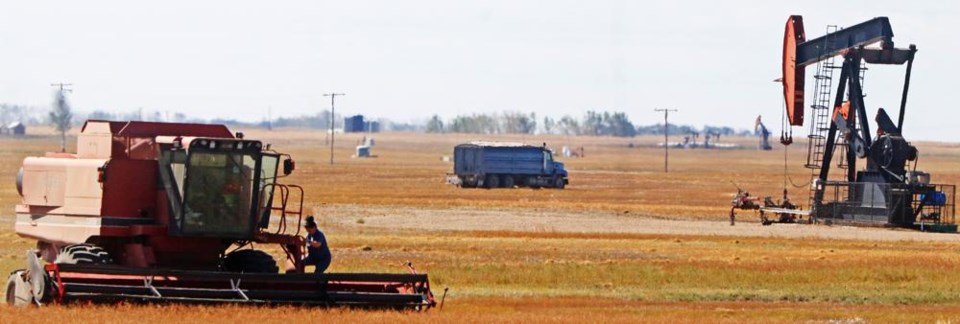ESTEVAN - Harvest continued to progress well this past week with 57 per cent of the crop now in the bin, up from 33 per cent last year but still behind the five-year (2017-2021) average of 68 per cent. An additional 20 per cent of the crop is ready to be swathed or straight-cut, if the weather remains ideal for harvesting, producers should be wrapped up their operations in two to three weeks. Winter cereals, pulse crops, durum, spring wheat and canola are the main crops to have come off so far in the region.
Very little rainfall was received in the region this past week with only up to five mm in the Moosomin area. While the region has had more rain this growing season than others it is rapidly drying out, some livestock producers are becoming increasingly more concerned with their pastures and some are now moving cattle due to a lack of grazing capacity.
Once harvest is wrapped up, producers are hoping for high amounts of precipitation to replenish topsoil and subsoil moisture as well as ensure there are adequate water sources for livestock. Cropland topsoil moisture is rated as three per cent surplus, 66 per cent adequate, 28 per cent short and three per cent very short. Hay and pasture land topsoil moisture is rated as three per cent surplus, 50 per cent adequate, 38 per cent short and nine per cent very short.
Durum grades in the region are currently being estimated as 56 per cent 1 CW, 32 per cent 2 CW, eight per cent 3 CW and four per cent 4 and 5 CW. Pea grades are estimated as 46 per cent 1 CAN, 50 per cent 2 CAN and four per cent 3 CAN. Lentil grades are estimated to be 53 per cent 1 CAN, 36 per cent 2 CAN, eleven per cent 3 CAN.
The majority of crop damage in the past week was due to wind, grasshoppers and frost. No major crop damage has been reported yet. Producers hope that it was a light frost and will not damage the quality of standing crops. There were also reports of damage caused by waterfowl and wildlife that have trampled and or eaten crops still in the field.
Producers are busy combining, harrowing, baling straw, hauling bales and moving cattle.




